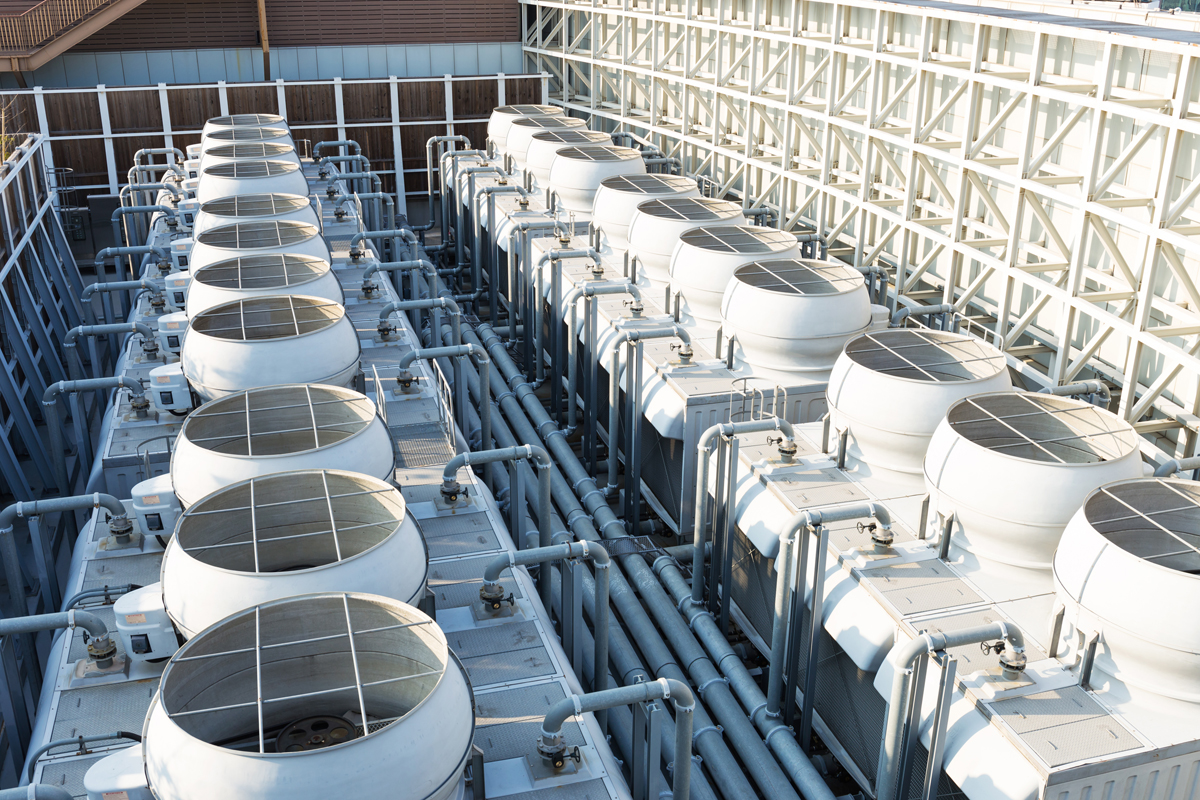What are the similarities and differences between crossflow and counterflow cooling towers? Let’s take a look!
Crossflow Cooling Towers
A crossflow cooling tower, because of its design, makes the hot process water flow down the fill media due to the force of gravity. This occurs while the air blows horizontally across the falling water, which cools it down. The air flow, of course, is the reason why it is named crossflow. In these towers, water requires only gravity for downward flow since there is no other force going against its direction. Hot water basins are placed above the fills, allowing for the water to be evenly distributed.
Crossflow Tower Pros
- Capable of up to 70% turndown.
- Utilizes high-efficiency heat transfer fill.
- Possible to clean water distribution system while in operation.
- Great performance in cold-weather applications.
Counterflow Cooling Towers
In counterflow cooling towers, the hot process water flows downward on the fill media to continue its flow down to drain onto the cold water basin. In this model, though, the air will enter the tower in a lower section, compared to the crossflow towers. The air will flow upward, passing through the water flowing the fill, resulting in a cooling down phase. The pressurized pipes and nozzles are also placed further apart than in crossflow models, as to not restrict airflow to the tower.
Counterflow Tower Pros
- Easy installation process.
- Low operating weight.
- Can use a wide variety of fill types.
Crossflow Vs Counterflow Maintenance Requirements
Routine maintenance is essential with cooling towers, regardless of the application. Typically, a crossflow cooling tower will have less maintenance needs over its lifespan. This is due simply to the number and location of air inlets in these models. While counterflow towers feature four air inlets, crossflow towers only have two.
Cooling Tower Operating Weights
A crossflow tower has a much larger operating weight than a counterflow model. Additional structures, though, do make for easier repairs and cleanings within crossflow towers. More piping found in the water distribution will only add to the weight of crossflow towers.
Should You Use A Crossflow Or Counterflow Cooling Tower?
Picking between these two cooling towers models will depend on the industry in need. Both crossflow and counterflow can be very effective at supporting chillers and achieving evaporative cooling.
Universal Tower Parts In Phoenix, AZ
Universal Tower Parts provides stainless steel and galvanized options, welded and gasketed, direct, gear reducer and belt drive units, with efficient Jedair fans, and Jedair low noise fans. Strainers, fan guards and louvers are well constructed, and designed to operate efficiently as they perform their function. Cool Core drift eliminators and fill are made by Universal Tower Parts expressly for our towers.





